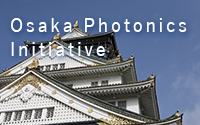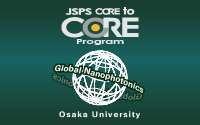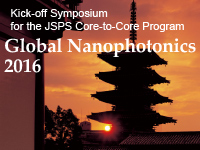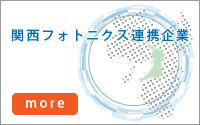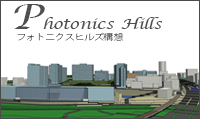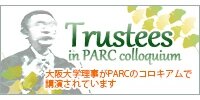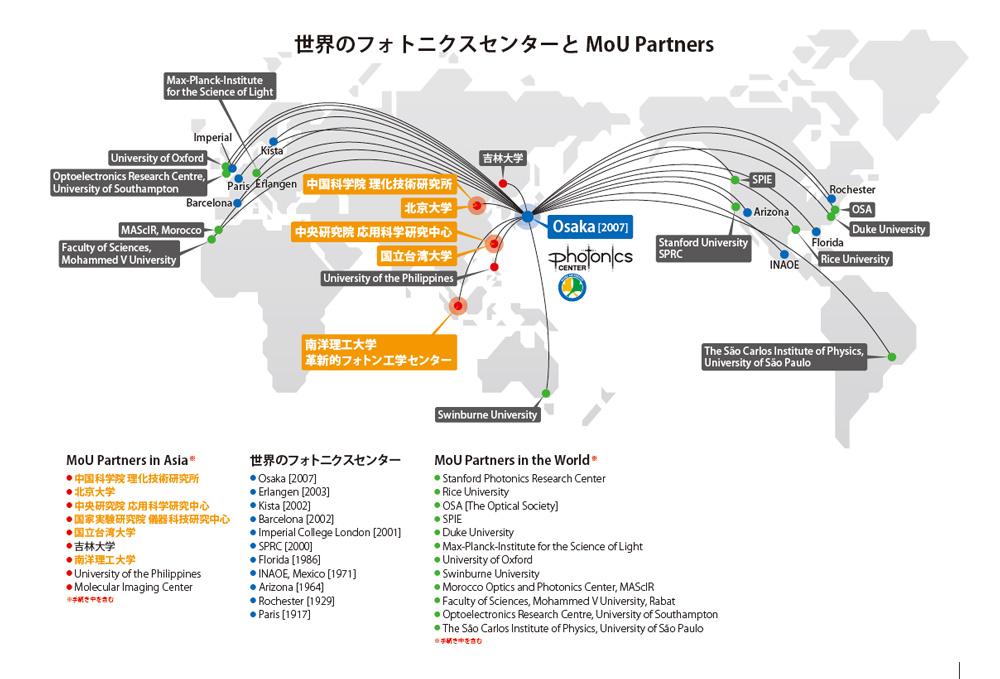
|
Focus
The Photonics Center, Osaka University has a strong international focus, and has working collaborations with many other photonics centers and optics researchers around the world. Within the Photonics Center, Osaka University is a highly international environment in which researchers from Australia, China, India, Morocco, Philippine and Tunisia work together. A group of graduate students within the Photonics Center, Osaka University established the Osaka University OSA Student Chapter in 2008, the first OSA student chapter in Japan.
MoU Partners in the World
Optoelectronics Research Centre, University of Southampton, Southampton, UK
Max Planck Institute for Science of Light, Erlangen
Morocco Optics and Photonics Center, Rabbat
Technical Institute of Physics and Chemistry, Beijing
National Taiwan University, Graduate Institute of Photonics and Optoelectronics, Taipei
National Taiwan University,Molecular Imaging Center,Taipei
Instrument Technology Research Center, Hsinchu
SPIE-International Society for Optics & Photonics
Sao Carlos Institute of Physics, University of Sao Paulo, Brasil
Nano-functional Photonics: study of new nano optical/ photonic functions originating from the interaction of photon and nano-structured materials
(Project for promoting international joint research, Osaka University, April 1st, 2014 - March 31st, 2017)
Optics&Photonics Center,Moroccan Foundation for Advanced Science, Innovation and Research(MAScIR) University of Mohammed V, Rabat・Faculty of SciencesPhotonics, the successor to electronics in the 20th century, is now moving into the spotlight to lead science, industry, and society in the 21st century. By this research project, searched and studied are new nano optical/photonic functions originating from the interaction of photon and nano-structured materials. We, in the fields of physics, chemistry, biotechnology, electrotechnology, and devices jointly promote research and education on this new department crossing target: Nano-functional Photonics and contribute to development of the 8th division of the Institute for Academic Initiatives, Osaka University. Encouraged are intimate research discussions among young researchers of the Moroccan Institute/University and Osaka University, expansion of research/educational network, and development of young talented nano-photonics researchers.
(Japan Society for Promotion of Science)
2011-2015 Program title: "Advanced Nanophotonics Research and Education Center in Asia" Core institutions:
Coordinator: Satoshi Kawata, Photonics Center, Osaka University
Osaka University’s Photonics Center has teamed up with leading universities and research institutes in Asia to form a center of advanced nanophotonics research (“Phlasmonics Nanophotonics”, “Optical Materials and Nanofabricaton”, “Plasmonic Device”, and “Metamaterials”) and education in Asia, where a diverse group of researchers engaged in cross-sectoral advanced photonics research involving physics, chemistry, medical science, and electric engineering will be assembled. We achieved our goal of creating a research network to lead research in the field of photonics, which underpins the science and technology of the 21st century. In 2013, we were awarded interim appraisal A.
Researcher exchange report of Asia Core Program
FY2011
FY2012
FY2013
FY2014
FY2015
▪️Total Numbers for 5 years (FY2011-FY2015)
363 people / 4,246 accumulated people
|
取り組み
大阪大学フォトニクスセンターは、世界各地のフォトニクスセンターや、光学研究者との提携を進めています。 当センターでもオーストラリア、中国、インド、モロッコ、フィリピン、チュニジアから研究者を受け入れ、共同研究をしています。また、2008年には大阪大学院生により、日本で初めてOSA(アメリカ光学会)学生支部が発足しました。 aaccei.org
世界の姉妹センター
オプトエレクトロニクス研究センター、サザンプトン、イギリス マックスプランク光科学研究所、エルランゲン、ドイツ
光学フォトニクスセンター、ラバット、モロッコ
中国科学院理化技術研究所、北京
国家実験研究院儀器科技研究中心、新竹
国立台湾大学光電工程学研究所、台北
国立台湾大学,Molecular Imaging Center,台北
国際光工学会(SPIE)
IFSCサンパウロ大学、サンパウロ市、ブラジル
ファンクショナル・フォトニクス:ナノ光機能の探索と学術展開
(H26年度 大阪大学 国際共同研究促進プログラム)
採択期間 H27.04.01〜H29.03.31
【相手先機関】 モロッコ先端科学イノベーション研究機関 Optics&Photonics Center, MAScIR モハメド 5世大学 理学研究科,モロッコ 【研究代表者】 Prof Sekkat ZOUHEIR 光 は人を包み込むように優しくふりそそぐと同時に、科学技術の基盤として活用され、その応用はあらゆる分野に拡がっています。本研究では、光子(フォトン) とナノ構造体の相互作用から生み出される新しいナノ光機能を探索し、その学術展開をはかります。ナノ領域での驚異的な光の増強、未知の非線形効果、金属な どのプラズモニックな新奇効果、周波数・偏光を利用したナノ空間の計測・制御などが挙げられ、物理、化学、バイオメディカル、電気、デバイス等、分野横断 的に共同研究・教育を推進します。モロッコ・阪大若手研究者の研究討論を重ね、研究教育ネットワークを強化し、ナノフォトニクスの人材を育成します。
アジア先進ナノフォトニクス研究拠点 平成23−27年 〔日本側拠点機関〕大阪大学 〔台湾側拠点機関名〕 中央研究院 応用科学中心、 〔シンガポール拠点機関名〕南洋理工大学 革新的フォトン工学センター 〔コーディネーター〕大阪大学フォトニクスセンター 河田 聡 日本、中国、台湾、シンガポールの連携により、先進ナノフォトニクス研究の4テーマ「プラズモニクス・ナノフォトニクス研究」、「光材料とナノ加工」、「プラズモニックデバイス」、「メタマテリアル」の融合研究を推進しました。さらに、学生カンファレンス、国際シンポジウム、研究者交流を有効に活用し、4拠点機関、各協力機関、協力研究者の研究者、大学院生の交流とネットワーク強化を行い、物理、化学、医学、電気の分野で横断的な先進ナノフォトニクス研究教育拠点を形成し、21世紀の科学技術の基盤となるフォトニクス研究を先導しうる研究ネットワーク・人的ネットワークを今後も継続的に発展できる体制を構築しました。 ・平成25年度アジア研究教育拠点事業の中間評価で当事業は総合的評価:A(最高ランク)を得ました
・平成26年度大阪大学部局主催国際シンポジウム等開催支援事業に, Japan-Singapore International Workshopが選定されました
アジアコア事業、交流実績報告
■平成23年度 交流実績■
■平成24年度 交流実績■
■平成25年度 交流実績■
■平成26年度 交流実績■
■平成27年度 交流実績■
▪️5年間交流実績(H23−H27年度)
363人/4,246人日
|

